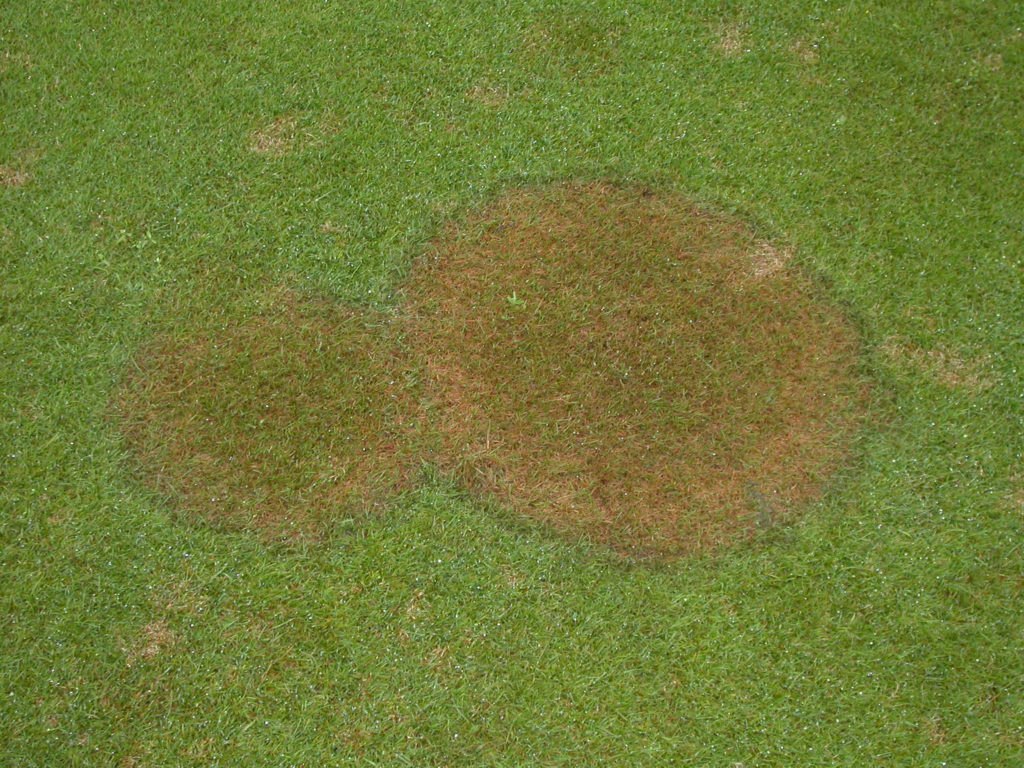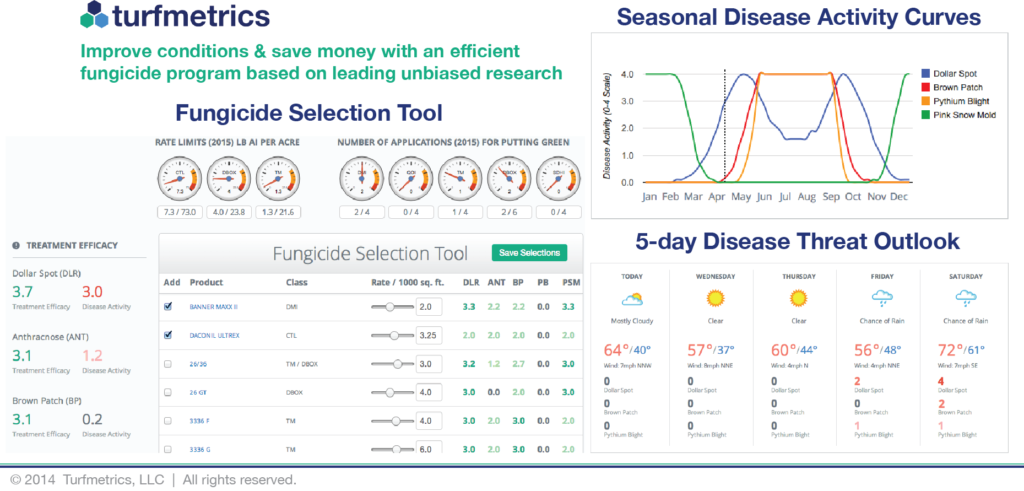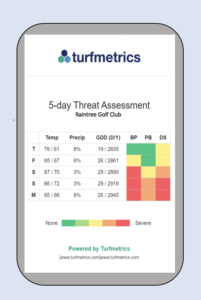Turf Disease Control in the Wake of COVID-19
Even in the best of economic times, golf course owners and administrators often ask “How can we reduce our chemical costs?” Now, as a virus-induced recession threatens, such questions will be more commonplace—perhaps with a sense of urgency. As budgets are reexamined, I suggest resisting the temptation (or pressure?) to shortchange your fungicide program. Pathogen populations left unchecked by anti-fungal compounds increase rapidly and cause more severe disease–resulting in cosmetic damage, structural damage and poor turf quality. Disease effects on turf may last for the entire season and pathogen populations remain in the turf profile, where they overwinter and will threaten turf in greater numbers the following year.
What if you adjusted your plan so that you do not spray until you see symptoms—hoping for a little luck and some dry weather to lengthen the interval between sprays, thereby eliminating one or several sprays? I think that is very risky from a couple of perspectives. First, think of the pathogen population as an iceberg. The visible part (disease symptoms) represents only a fraction of the massive population hidden within the turf profile. In “iceberg-ology” terms, there is always much more than meets the eye. Waiting to spray until symptoms appear means allowing that greater unseen mass to expand! Then when episodes of disease-favorable weather occur–and they always do–the outbreak will be sudden and severe. A second risk factor is that fungicide-resistant pathogen strains are more likely to appear among large populations. Applying a fungicide with a single-site inhibitor (basically all modern fungicides except chlorothalonil, fluazinam, mancozeb, and phosphonates) to a huge pathogen population will all but guarantee establishment resistant strains. Moreover, if the resident strain already is trending towards resistance or insensitivity, fungicide performance will be poor. So, the “wait-and-see” approach may be rewarding if Mother Nature cooperates; but if not, the risk is increased damage, a buildup of pathogen populations, and the rise of fungicide-resistant pathogen strains.
How about using weather-based models to time fungicide applications? Worth considering, but not without limitations. There are only a few functional models or decision aids. Models that “forecast” brown patch and Pythium blight outbreaks can be useful, primarily because those diseases occur sporadically throughout the season and pathogen activity occurs within narrow, fairly well-defined environmental windows. I like the summer patch 65° decision rule to initiate summer patch sprays. It suggests timing the first summer patch spray when maximum daily soil temperature (3” depth) reaches 65° F for 3 consecutive days. Timing the first spray is most important here. If you get it right, or close to right, one or two follow up sprays at 3-week intervals will provide excellent control. I suggest a combination of QoI and DMI fungicides, e.g., Navicon, a product that combines pyraclostrobin (QoI, Insignia) and mefentrifluconazole (DMI, Maxtima). The Maxtima DMI has an added benefit of safety on bent and Poa greens, even in the heat of the summer. A similar 70° decision rule for spring dead spot control on bermudagrass also is worth considering. It has not been tested as rigorously as the summer patch rule, but it makes sense and results have been satisfactory in limited trials.
There is a lot of buzz about decision rules for dollar spot control. Their utility for scheduling sprays is limited by the fact that temperature and moisture conditions favoring growth and infection by the dollar spot pathogen(s) are very broad and persist for much of the season. My favorite is the Turfmetrics forecaster (turfmetricsforecast.com). I developed the algorithm, so I am biased. Each morning, the model issues a true forecast (5 days in advance) of the dollar spot threat. I suggest creating an effective fungicide program that schedules sprays at prescribed intervals, and then use the Turfmetrics disease forecast to adjust your program. The advantage of the 5-day outlook is that it provides ample warning for protecting turf ahead of looming disease pressure. The goal should be to keep populations low, prevent outbreaks (think about the iceberg), reduce the likelihood of fungicide-resistant mutant strains, and ensure excellent turf quality though the season.
The economic slowdown will come, and will challenge superintendents to use all of their creativity and diligence to manage turf as efficiently as possible. But also, it will end, and tee sheets will fill up again before long. And when the golfing public does return, they will be happy to resume play on healthy, disease free putting greens, fairways, and tee boxes.


